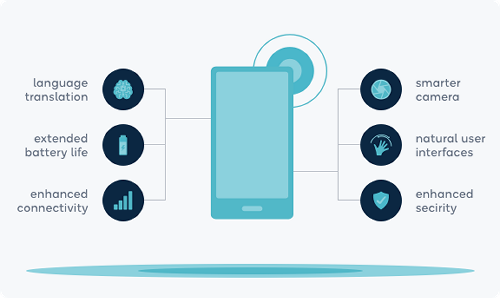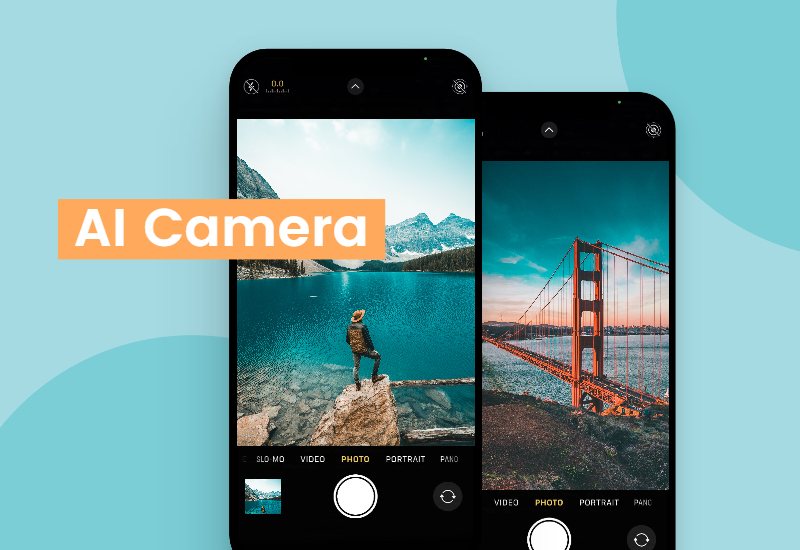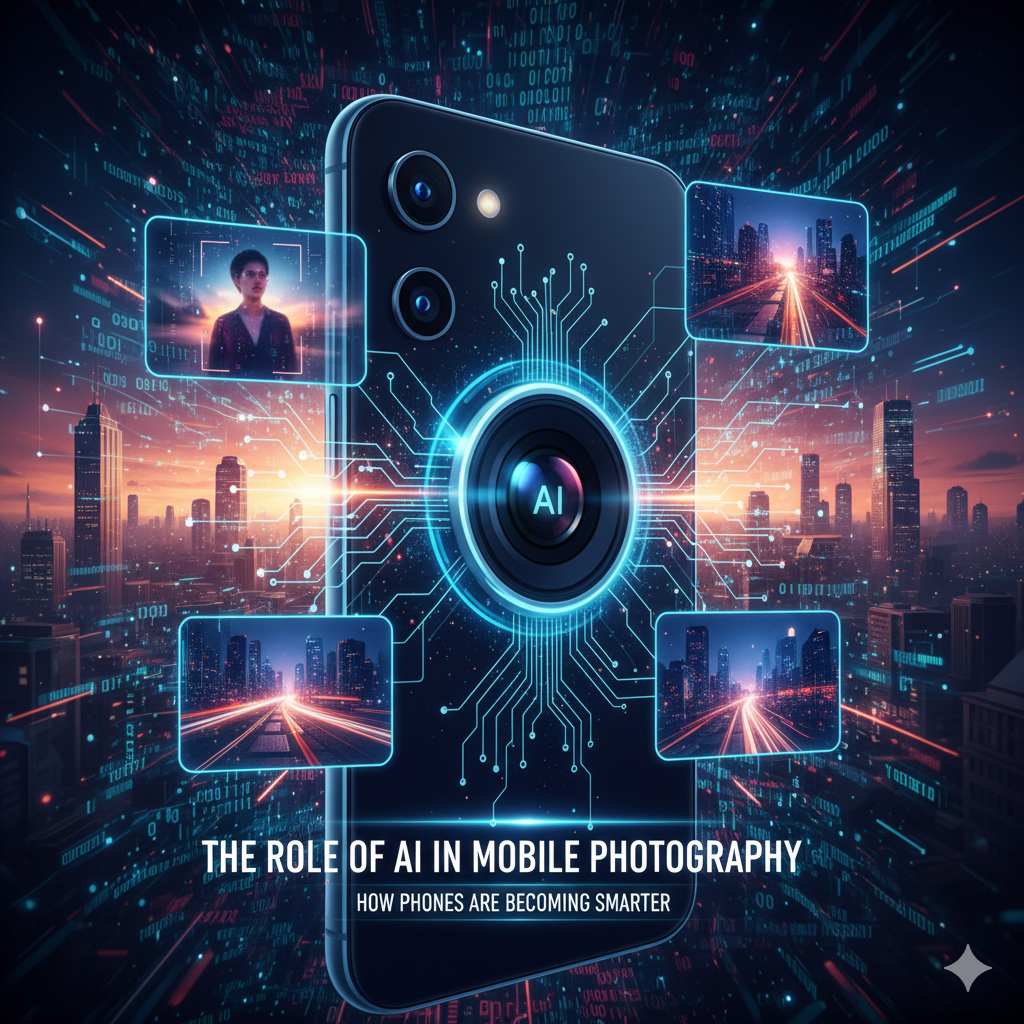The world of mobile photography has undergone a significant transformation with the integration of Artificial Intelligence (AI). Today, smartphones are equipped with advanced AI-powered cameras that can automatically adjust settings, detect scenes, and enhance image quality. This revolutionary technology has enabled users to capture stunning photos with ease, making mobile photography more accessible and enjoyable. As AI continues to advance, it’s exciting to explore the vast possibilities it holds for mobile photography, and how it’s transforming the way we capture and share our favorite moments. AI is making phones smarter, one photo at a time.
Introduction to AI in Mobile Photography
The role of Artificial Intelligence (AI) in mobile photography has revolutionized the way we take and edit photos. With the advancement of Machine Learning (ML) algorithms, phones are becoming smarter and more capable of capturing high-quality images. The integration of AI-powered features in mobile cameras has enabled users to take better photos with minimal effort.
Enhanced Image Processing with AI
AI-driven image processing has improved the overall quality of photos taken with mobile phones. The algorithm analyzes the scene, detects the subject, and adjusts the settings accordingly to produce a well-balanced image. This includes auto-focus, exposure compensation, and noise reduction. The AI-powered image processing also enables features like portrait mode, night mode, and super-resolution.
Smartphone Cameras with AI-Powered Features
Many smartphone manufacturers are now incorporating AI-powered features in their cameras. These features include scene detection, object tracking, and facial recognition. The AI algorithm can detect the scene and adjust the camera settings to capture the best possible image. For example, if the scene is a landscape, the AI will adjust the settings to capture a wider field of view and a greater depth of field.
| Feature | Description |
|---|---|
| Scene Detection | The AI algorithm detects the scene and adjusts the camera settings accordingly. |
| Object Tracking | The AI tracks the object and adjusts the focus and exposure to capture a sharp image. |
| Facial Recognition | The AI detects and recognizes faces, enabling features like portrait mode and facial tracking. |
The Future of Mobile Photography with AI
The future of mobile photography with AI looks promising. With the advancement of Machine Learning and Deep Learning algorithms, we can expect to see more innovative features in mobile cameras. The integration of AI with Augmented Reality (AR) and Virtual Reality (VR) will enable new and exciting ways to capture and interact with images. The AI-powered cameras will also enable features like multi-frame noise reduction, advanced portrait mode, and super-resolution zoom.
Benefits of AI in Mobile Photography
The benefits of AI in mobile photography are numerous. The AI-powered features enable users to take better photos with minimal effort. The auto-focus, exposure compensation, and noise reduction features ensure that the images are sharp, well-exposed, and noise-free. The AI-driven image processing also enables features like portrait mode, night mode, and super-resolution, which were previously only available in DSLR cameras. The AI also enables real-time image processing, allowing users to see the results of their photos immediately.
What is the role of AI in photography?

The role of Artificial Intelligence (AI) in photography is rapidly evolving, and it has become an essential tool for photographers and photo editing software. AI-powered tools can help with tasks such as image editing, object detection, and image recognition, making the photography process more efficient and effective. AI can also be used to analyze and improve the quality of photos, allowing photographers to focus on the creative aspects of their work.
Enhancing Image Quality with AI
AI algorithms can be used to enhance the quality of photos by reducing noise, improving contrast, and increasing resolution. This can be especially useful for photos taken in low-light conditions or with low-quality cameras. Some of the key features of AI-enhanced image quality include:
- Noise reduction: AI can help reduce noise in photos, resulting in a cleaner and more professional-looking image.
- Contrast adjustment: AI can adjust the contrast of photos to bring out the details and create a more balanced image.
- Resolution enhancement: AI can increase the resolution of photos, making them suitable for printing or displaying on large screens.
Automating Photo Editing with AI
AI can also be used to automate the photo editing process, saving photographers time and effort. AI-powered tools can detect objects, apply filters, and make adjustments to photos, allowing photographers to focus on the creative aspects of their work. Some of the key features of AI-powered photo editing include:
- Object detection: AI can detect objects in photos, such as people, animals, or buildings, and apply effects or adjustments accordingly.
- Filter application: AI can apply filters to photos, such as black and white or sepia, to create a specific mood or atmosphere.
- Automatic adjustments: AI can make automatic adjustments to photos, such as brightness and saturation, to improve the overall quality of the image.
Revolutionizing Photography with AI-Powered Cameras
AI-powered cameras are becoming increasingly popular, and they offer a range of features that can enhance the photography experience. These cameras can detect scenes, track objects, and apply effects in real-time, allowing photographers to capture the perfect shot. Some of the key features of AI-powered cameras include:
- Scene detection: AI can detect the scene and adjust the camera settings accordingly, such as landscape or portrait mode.
- Object tracking: AI can track objects in real-time, allowing photographers to capture the perfect shot.
- Real-time effects: AI can apply effects in real-time, such as bokeh or depth of field, to create a more professional-looking image.
How does AI enable smart devices get smarter as we use them?

The integration of Artificial Intelligence (AI) into smart devices has enabled them to become increasingly intelligent and adaptive as we use them. This is achieved through the collection of user data and behavioral patterns, which are then used to train machine learning models that improve the device’s performance and functionality over time. As a result, smart devices can now learn and adapt to our preferences, anticipate our needs, and provide a more personalized user experience.
Machine Learning and Data Analysis
The key to enabling smart devices to get smarter is through the use of machine learning algorithms that can analyze large amounts of data and identify patterns and trends. This is achieved through the following steps:
- The device collects user data, such as usage patterns, preferences, and behavioral habits.
- The data is then analyzed using machine learning algorithms to identify insights and trends.
- The insights gained from the data analysis are used to train the device’s AI model, enabling it to make predictions and recommendations based on the user’s behavior.
Personalization and Adaptation
As smart devices collect more user data, they can begin to personalize their responses and adapt to the user’s needs and preferences. This is achieved through the use of natural language processing and recommendation engines, which enable the device to understand the user’s intent and provide relevant responses. For example:
- The device can learn the user’s schedule and routine, and provide reminders and notifications accordingly.
- The device can adapt to the user’s music and video preferences, and provide recommendations based on their taste.
- The device can integrate with other smart devices to provide a seamless and connected experience.
Continuous Improvement and Update
To ensure that smart devices continue to get smarter, they must be able to learn from new data and update their AI models accordingly. This is achieved through the use of cloud-based services that can update the device’s software and algorithms in real-time. For example:
- The device can receive software updates that improve its performance and security.
- The device can access new features and functionality through cloud-based services.
- The device can integrate with new devices and services, enabling it to expand its capabilities and functionality.
How is artificial intelligence used in mobile phones?

Artificial intelligence (AI) is used in mobile phones to enhance the user experience, improve performance, and provide innovative features. Machine learning algorithms are integrated into mobile devices to enable tasks such as image recognition, speech recognition, and predictive text input. Additionally, AI-powered virtual assistants like Siri, Google Assistant, and Bixby help users manage their daily tasks, set reminders, and access information on the go.
AI-Powered Cameras and Imaging
The use of AI in mobile phone cameras has revolutionized the way we capture and edit images. Computer vision techniques enable features like portrait mode, low-light enhancement, and automatic scene detection. This is achieved through the use of
- Neural networks that analyze image data and adjust settings accordingly
- Machine learning algorithms that learn from user preferences and adapt to different environments
- Image processing techniques that enhance colors, contrast, and details
to produce high-quality photos and videos.
Personalized User Experience
AI-driven personalization is used to tailor the mobile phone experience to individual users. Natural language processing (NLP) enables virtual assistants to understand user queries and respond accordingly. Moreover, AI-powered recommendation systems suggest apps, music, and videos based on user behavior and preferences. This is made possible through the use of
- User profiling to create personalized profiles
- Behavioral analysis to track user interactions
- Predictive modeling to forecast user preferences
and provide a unique experience for each user.
Smart Battery Management and Performance
AI is used to optimize mobile phone performance and extend battery life. Predictive analytics help anticipate user behavior and adjust system resources accordingly. Additionally, AI-powered power management systems optimize battery consumption by
- Learning usage patterns to predict power requirements
- Adjusting system settings to minimize power consumption
- Identifying areas of inefficiency to optimize resource allocation
and ensure seamless performance and longer battery life.
What is the benefit of AI camera in mobile?

The benefit of AI camera in mobile is that it enhances the overall photography experience by providing advanced features and capabilities. With AI-powered cameras, users can capture high-quality images and videos with improved clarity and enhanced colors. The AI technology analyzes the scene and adjusts the camera settings accordingly, resulting in better composed and more visually appealing images.
Improved Image Quality
The AI camera in mobile devices optimizes image quality by reducing noise, enhancing colors, and improving contrast. This results in crisper and more detailed images, even in low-light conditions. Some of the key features that contribute to improved image quality include:
- Auto-focus technology that quickly and accurately focuses on the subject
- Image stabilization that reduces camera shake and blur
- Multi-frame noise reduction that minimizes noise and grain in images
Advanced Photography Features
AI-powered cameras in mobile devices offer advanced photography features such as portrait mode, landscape mode, and night mode. These features utilize AI algorithms to analyze the scene and apply the necessary effects to produce stunning images. Some of the key features that contribute to advanced photography include:
- Depth sensing technology that creates a bokeh effect in portrait mode
- Scene detection that automatically adjusts camera settings based on the scene
- Multi-frame HDR that captures a wider dynamic range and produces more detailed images
Enhanced User Experience
The AI camera in mobile devices streamlines the photography experience by providing intuitive and user-friendly interfaces. Users can easily access and utilize various camera features and modes, making it simpler to capture high-quality images. Some of the key features that contribute to an enhanced user experience include:
- Gesture recognition that allows users to control the camera with gestures
- AI-powered camera assistants that provide real-time feedback and suggestions
- Personalized camera settings that learn and adapt to the user’s preferences over time
Frequently Asked Questions
What is the Impact of AI on Mobile Photography?
The impact of Artificial Intelligence (AI) on mobile photography has been significant, transforming the way we capture and edit images. With AI-powered camera systems, smartphones can now automatically adjust settings such as exposure, focus, and color balance to produce high-quality photos. Machine learning algorithms can also be used to detect and recognize objects, scenes, and people, allowing for more accurate and efficient image processing. Additionally, AI-driven features like portrait mode, night mode, and super-resolution have become increasingly popular, enabling users to capture stunning images with ease. As a result, mobile photography has become more accessible and enjoyable, with AI playing a vital role in enhancing the overall user experience.
How Do AI-Powered Cameras Enhance Image Quality?
AI-powered cameras use advanced algorithms to analyze and optimize image data in real-time, resulting in significantly enhanced image quality. By leveraging deep learning techniques, these cameras can detect and correct for issues such as noise, blur, and distortion, producing sharper and more vibrant images. Furthermore, AI-driven features like auto-focus, auto-exposure, and auto-white balance enable cameras to adapt to changing lighting conditions, ensuring that images are well-lit and properly exposed. The use of neural networks also allows for more accurate object detection and scene understanding, enabling cameras to make informed decisions about composition, focus, and exposure. Overall, AI-powered cameras have revolutionized the field of mobile photography, making it possible to capture stunning images with unprecedented ease and accuracy.
What Role Does Machine Learning Play in Mobile Photography?
Machine learning plays a crucial role in mobile photography, enabling AI-powered cameras to learn and improve over time. By analyzing vast amounts of image data, machine learning algorithms can identify patterns and develop models that allow cameras to make more accurate predictions about image quality, object detection, and scene understanding. This enables cameras to adapt to changing conditions, such as lighting, weather, and subject matter, and make informed decisions about exposure, focus, and composition. Additionally, machine learning allows for the development of personalized camera experiences, where cameras can learn and adapt to individual users’ preferences and shooting styles. As a result, machine learning has become a vital component of mobile photography, enabling AI-powered cameras to produce stunning images with unprecedented accuracy and ease.
Will AI Replace Human Photographers in the Future?
While AI has made significant strides in mobile photography, it is unlikely to replace human photographers entirely. AI-powered cameras are designed to augment and enhance the photography experience, rather than replace the creative vision and expertise of human photographers. Professional photographers bring a unique perspective, creative vision, and technical skill to their work, which is difficult to replicate with AI alone. Additionally, human intuition and emotional connection play a vital role in capturing images that tell a story, evoke emotions, and convey meaning. While AI can certainly help with technical aspects of photography, such as exposure and focus, it is the human touch that brings images to life and makes them truly unforgettable. As a result, AI and human photographers will likely continue to work together in harmony, each contributing their unique strengths and abilities to create stunning and captivating images.
